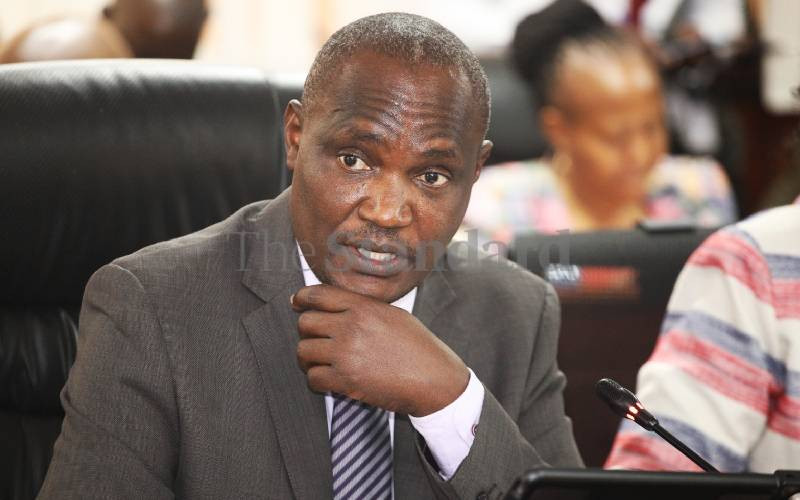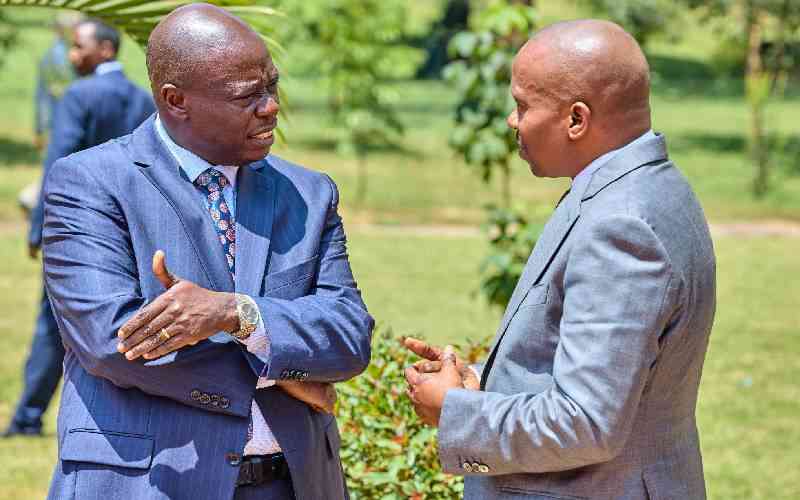Since the end of longest teachers' strike, that took a record three weeks of total labour withdrawal, in 2015, the situation is no longer at ease for the teachers of this nation.
The strike that commenced in September 2015 to October 2015, created a paradigm shift on matters of handling issues related to teachers in the country.
Led by their unions, ably steered by their indefatigable Wilson Sossion and Mudzo Nzili of Kenya National Union of Teachers, KNUT, and the Kenya Union of Post Primary Education Teachers, KUPPET, leaders Okelo Misori and Omboko Milemba respectively.
The teachers instituted legal proceedings pitting them against their employer, Teachers Service Commission, TSC, demanding the implementation a salary hike, popularly known as 50-60.
The 50-60 per cent originates from the document obtained from the TSC, was was still under discussion, which suggested that indeed, it was high time that the teachers were given a basic rise of between 50 and 60 per cent to cushion them against inflation, like other Government workers.
When the Salaries and Remuneration Commission, SRC, officials saw the document, they quickly advised TSC to withdraw the said document, citing that such an increase on basic salary would be untenable, unsustainable, unrealistic and costly to the exchequer.
But it was too late, Union officials had obtained their copy from a past deliberation sessions and they immediately dropped the earlier 300 per cent salary percent demands, with various perks and officially adopted the 50 -60 per cent slogan.
The teachers took the case to court for further ventilation, and the court presided over by Justice Nduma Nderi, ordered the teachers employer to immediately pay the teachers the 50%-60% salary increase.
Considering that they were the only workers who had never received any substantial annual minimum increment just other state servants working in other sectors, for many years.
The judge further directed that the money be paid as from 1st July 2015, to be backdated as from July 2013.
The TSC reneged, instead appealed the case to the Supreme Court, and in every appellate level, the teachers' employer was dealt a blow.
It took the direct intervention of the Attorney General, Githu Muigai to re-appeal on behalf of the Government for the case to quashed, to allow deliberations, that led to the signing of the 2016 CBA.
Throughout the strike period and during the court sessions, it appeared that teachers had a stronger case, and had assembled the best legal brains in the country, including Paul Muite, Abdinasir Abdullahi, and Kioko Kilukumi.
That alone found the Government and TSC being embarrassed in court through defeats.
It was therefore realised that the unions had resources to assemble such a legal juggernaut.
The money came from monthly teachers' union contributions.That did not augur well, the unions had to be starved of cash so that in future they won't manage to accomplish such a feat on matters labour law.Divide and rule.
At first, they introduced an online system of validating union membership for all teachers, meaning all teachers were illegally removed from the union register and were supposed to choose to belong to the two main unions or just let be.
For one to confirm membership one needed to immediately register in the online payslip portal(www.payslip.tsc.go.ke), then press the "confirm union membership" icon.
Coupled with a lack of proper lCT knowledge among teachers, poor internet frequency in many parts of Kenya, only about 7,000 teachers, had validated membership nationwide, by the April 2016 deadline.
It took a soft stance by Union officials, with the intervention of CS Dr. Fred Matiang'i to abolish the online union confirmation system pronto.
Finally all teachers were back to the unions, however, some were erroneously removed, this came at a time when most KNUT and KUPPET branches countrywide were on the verge of closing while some had closed shop.
Matters did not end there. The TSC had to flex muscles, to teach teachers a lesson, for them to realise who was the boss.
Unilaterally, the teachers' employer introduced the amorphous appraisal tool and a compulsory contracting system.
In the arranged, a teacher needs to own close to 20 different documents, which outlines more responsibilities as well as introducing new directives such as holding staff meetings, games and sports and drama/music, training on Saturdays and Sundays, to ensure that teachers are suppressed, repressed, coerced and have no free time, to dream about a strike in future.
Also included in the new guidelines is the supervisory role given to the learners(who will monitor lesson attendance by teachers), as well as the school Board of Management(BOM).
Despite the spirited criticism of the teachers' employer by the unions and other education lobbyists, TSC, led by Chair Lydia Nzomo and CEO Nancy Macharis, has stuck to their guns, claiming that that is the only way to improve the education standards in the country.
Whether the new approaches by TSC will bear fruits or disorient further an already demotivated, hopeless, teacher population who view TSC decisions as oppressive, it is only time that will tell, given the fact that, the employer is not willing to honour a CBA signed in 2016, whose implementation was supposed to start in July 2017.
 The Standard Group Plc is a
multi-media organization with investments in media platforms spanning newspaper
print operations, television, radio broadcasting, digital and online services. The
Standard Group is recognized as a leading multi-media house in Kenya with a key
influence in matters of national and international interest.
The Standard Group Plc is a
multi-media organization with investments in media platforms spanning newspaper
print operations, television, radio broadcasting, digital and online services. The
Standard Group is recognized as a leading multi-media house in Kenya with a key
influence in matters of national and international interest.
 The Standard Group Plc is a
multi-media organization with investments in media platforms spanning newspaper
print operations, television, radio broadcasting, digital and online services. The
Standard Group is recognized as a leading multi-media house in Kenya with a key
influence in matters of national and international interest.
The Standard Group Plc is a
multi-media organization with investments in media platforms spanning newspaper
print operations, television, radio broadcasting, digital and online services. The
Standard Group is recognized as a leading multi-media house in Kenya with a key
influence in matters of national and international interest.





